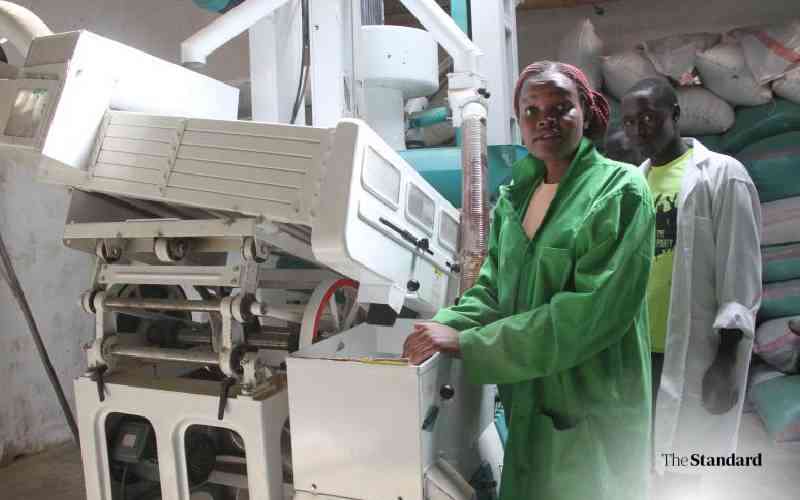In my somewhat unique position as someone who had a long career both with the National Weather Service and NOAA Research (i.e., Office of Oceanic and Atmospheric Research, OAR), I have done a lot of media interviews in the last few months about the two agencies and the various threats they are under. In a recent phone interview with a central Oklahoma media outlet, I was explaining to the reporter that the National Severe Storms Laboratory leads most of NOAA’s research to improve forecasts and warnings for severe storms, flash floods and tornadoes, and that the proposed NOAA budget would close the lab and eliminate most of NOAA’s research work in this area (along of course with nearly all of NOAA’s weather, climate and ocean research).
After I finished saying all of this, there was a pause, and then the reporter said, “I mean, this just seems insane. Why are they doing this?” I kind of laughed and said, “Good question, I wish I knew.” I did give him my speculation that OAR is being targeted for elimination because most of NOAA’s climate research is done by this line office and clearly the administration is targeting anything with the word “climate” in it, i.e., weather research is just collateral damage. Once the interview was over, though, I started thinking more deeply about it, and came to realize that this is really an important question that needs more exploration. Why are they doing this, indeed?
I have had many conversations with colleagues in recent weeks about the proposed NOAA budget cuts, and in the course of those discussions I have heard (and offered) many explanations, from the one that I gave to the reporter, to revenge against NOAA for Sharpiegate, to privatization of weather forecasting, etc. As I thought more deeply about all of this, though, I realized that I - and perhaps my colleagues, though I won’t speak for them - was likely looking at this from too myopic of a point of view.
I think part of the reason it is so hard for us in the weather community to fathom the depths of these proposed cuts is because for many years weather research has been a broadly bipartisan supported effort within NOAA. In the later part of my NSSL career, I worked extensively on - and for several years led - VORTEX-Southeast, a tornado research program that really came into existence due to the efforts of Republican congressional delegations in the Southeast United States. While climate change has been a topic fraught with political danger, hazardous weather impacts everyone, Democrat or Republican, and as such supporting hazardous weather research has truly been a pretty bipartisan position in Congress and for recent presidential administrations.
So as I and my colleagues have tried to figure out what has changed to result in these dramatic proposals to reduce NOAA, we have tended to focus on reasons related to our specific scientific endeavors. However, I think the reality is that rather than support for weather science being caught in the flotsam of an anti-climate effort, weather and climate science are caught in the flotsam of anti-science efforts. Yes, hazardous weather impacts everyone - but so do cancer, infectious disease, earthquakes, environmental hazards, the list goes on - and all of the federal science agencies that work on these science problems are also facing major cuts in resources.
If that is the case, then the question naturally becomes why is the administration pursuing an anti-science agenda? This Nature article from several weeks ago details the how of the broad anti-science efforts that the Trump Administration engaged in during its first few months. It also speculates on some potential reasons why, including the desire for more privatization that I alluded to above.
For what it is worth, my sense as someone who worked as a federal scientist for 35 years is that the rationale is mainly about control. Science at its core is about following where the facts and evidence take you, even if you do not like where you end up. While I certainly encountered some situations in my career where I observed political pressure regarding science, in my experience for the most part federal scientists have not only been allowed, but encouraged, to “follow the science.” The inherent problem with following the science in government, though, is that the science (and, in many ways, the scientists) are then what control decisions and outcomes, not politics. For whatever reason, we seem to have reached a point now where political control is much more important than enabling science, even when public safety is the goal of said science.
When I envisioned starting this Balanced Weather Substack as a retirement project, I truly was focused on it as a way to stay in touch with meteorology and to hopefully bring people interesting information about weather and science. I did not anticipate spending as much time as I have on policy and politics, but given the importance that the weather enterprise plays in public safety I think it is important for me to share my perspectives and insights on these issues. In that vein, I want to finish up by talking about some of the consequences of these policy decisions that most concern me, starting by highlighting an excerpt from the Nature article:
Government scientists are accustomed to budget swings and downsizing efforts, but scholars say the degree of hostility and the sheer scale of the potential workforce cuts make this time different.
Researchers interviewed by Nature say that it takes time to train a new generation of recruits, in part because of the unique institutional realities that come with being a government scientist: researchers need to understand government procedures as well as the administrative and statutory context for their work. “The destruction is so pervasive and severe that it’s just not going to be possible to go back to the way things were,” says Blake Emerson, an administrative-law researcher at the University of California, Los Angeles.
“The thing people need to understand about the long term is that when you fire people and when you dismantle projects, you can’t recreate that the moment you have a new administration,” Holdren says (John Holdren, a science adviser to former US president Barack Obama who is now a science-policy specialist at the Harvard Kennedy School in Cambridge, Massachusetts.) “You’ve lost the momentum. You’ve lost the knowledge, and rebuilding it can take years to decades.”
This excerpt starts with a point I want to reinforce and make abundantly clear: in 35 years as a federal scientist, I am very much used to the ups and downs of federal budgets and debate about the roles of science and government. What we are seeing in the first months of the Trump Administration is fundamentally different than anything I have seen in those 35 years - or heard of back to the beginning of the post-World War II American science enterprise. While I am absolutely sure that there are many fundamental ways in which the federal scientific enterprise could be improved, or even just changed to better mirror the political priorities of an administration, what we are witnessing today is not an effort at improvement. Completely eliminating NOAA research, cutting NSF by 50%, eliminating entire research programs across multiple science agencies - these are not the actions of trying to improve or better align scientific agencies, they are actions meant to destroy capacity.
Hence, we need to be clear that if some of the most dire budget proposals such as elimination of OAR occur, the results will be destructive, and as alluded to in Nature, it will not be easy to rebuild if and when a new administration decides that weather and climate research is once again a priority. Using my last workplace as an example, the National Severe Storms Laboratory (NSSL) recently celebrated 60 years in existence, and its University of Oklahoma cooperative institute CIWRO started in 1978. The extensive research-to-operations (R2O) outcomes that NSSL has developed in support of improving warnings and forecasts of severe storms, from Doppler weather radar in the 1970s and 1980s to recent developments such as the Multi-radar Multi-sensor System (MRMS) and Warn-on-Forecast (WoFS) were only achievable because of the evolving and improving R2O infrastructure built by NSSL and CIWRO over those 60 years in partnership with the National Weather Service.
In a nutshell, that R2O process involves NSSL research scientists working with NWS meteorologists to identify operational problems where research could help the NWS. For example, NSSL developed MRMS in an effort to meet NWS forecasters’ needs for better real-time precipitation estimates and severe weather algorithms through leveraging the entire NEXRAD network and other observations; WoFS was developed to try to help NWS forecasters provide actionable tornado and flash flood information beyond the timeframe currently covered by warnings. Once problems such as these are identified, NSSL scientists partner with CIWRO scientists to develop research projects to try to tackle the problems. An important aspect of this process is that these research efforts typically include projects that graduate students can work on to earn their degrees, so not only does NOAA get the research outcomes it needs, but also the benefit of developing young scientists who can step into new roles and continue to advance the science throughout their careers.
Once research results are obtained and validated, tools and products for use by forecasters are developed and evaluated in the NOAA Hazardous Weather Testbed (HWT). Here, researchers have the opportunity to provide NWS forecasters with experimental tools and products that the forecasters can use to see if their warning or forecast process is improved. The HWT provides an iterative environment where researchers can quickly take suggestions from the forecaster and improve the experimental products for further evaluation. Eventually, the tools and products that are validated as improving the NWS workflow can be implemented operationally.
Hopefully by giving you an overview of the R2O process at NSSL, I have given you some sense of what would be lost with the complete elimination of NSSL and CIWRO. This R2O process took decades to develop, and it is made up of many complex human and organizational components. The NSSL-led R2O methodology is literally the gold standard that other countries have utilized to develop their own severe weather research programs. Each spring, meteorologists from all over the world come to Norman, OK to participate in Hazardous Weather Testbed experiments and learn lessons to take back to their own national meteorological agencies. Once NSSL and CIWRO are eliminated, this model is irretrievably destroyed. It might not take 60 years to rebuild it, but as alluded to in the Nature article: you’ve lost the momentum, you’ve lost the infrastructure, you’ve lost the students, you have literally lost decades.
Again, I want to emphasize that what I have focused on here is NSSL and CIWRO because those are the entities I worked with for the last 10 years. There are 9 other NOAA labs and more than a dozen university cooperative institutes working on a myriad of other weather, climate, Great Lakes and oceanic science issues, e.g., fire weather, artificial intelligence techniques, winter weather, improved numerical models, flash flooding. Under the current proposed NOAA budget, all of these labs and institutes will be eliminated, and all of their research-to-operations efforts will lose decades of potential progress.
The administration’s own NOAA budget document states the need for an NWS that can provide “operational forecasts, warnings, impact-based decision support services (IDSS) and other life-saving products and services to the emergency management community and public as they prepare for and respond to .” The administration itself acknowledges the increasing frequency of events and hence growing societal needs for warning and forecast services. Destroying the NOAA research-to-operations structure built over decades seems all too likely to yield an NWS unable to evolve to meet those growing needs.








